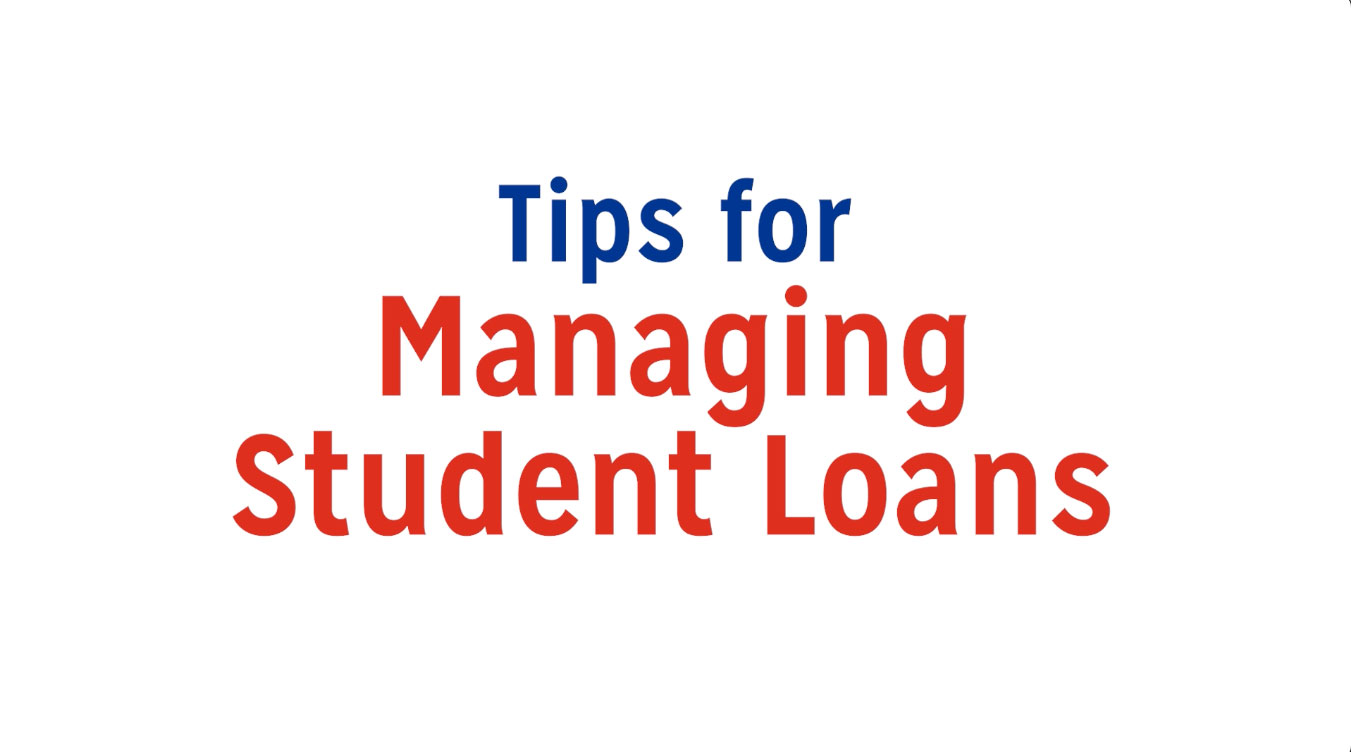To ensure you receive the best service possible,
please enter your zip code below:

explore AAA Banking
AAA Banking offers flexible savings options, competitive rates and the trusted support you expect from AAA.

If you’re paying off student loans, the return of monthly payments may feel like a financial curveball. After more than three years of paused payments and 0% interest, restarting that routine takes planning and patience.
Whether you’re just getting started or trying to finish strong, these student loan tips can help you manage payments more effectively, avoid added costs and stay focused on your financial goals.
Federal student loan payments were paused in March 2020 as part of an emergency relief plan during the COVID-19 pandemic. Interest rates were set to 0%, and collections on defaulted loans were temporarily paused.
Originally designed as a short-term measure, the pause stretched for nearly four years and gave millions of borrowers a break from payments.
For someone with thousands in federal student loan debt, this pause meant years without interest piling up. Estimates showed that borrowers who were in active repayment but took a break during the pause freed up about $280 per month.
But now that the payments are back, it’s a good time to revisit your plans for managing student loan debt.

If making your monthly student loan payment feels like a stretch, you’re not alone. Rising living costs and other financial responsibilities can make it hard to stay current, especially if your budget hasn’t adjusted since the payment pause ended.
However, there are ways to get breathing room. For federal loans, an income-driven repayment plan (IDR) can lower monthly payments based on income and family size. If you’re between jobs or dealing with unexpected expenses, you can also look into deferments or forbearances. These are temporary pauses that can give you time to regroup; both federal and private lenders may offer them.
Just know that, in most cases, interest may still accrue. Understanding how to manage student loans is key to helping you stay in control even if things get tight.
Hear expert insight and strategies for taking charge of your debt in “Debt Management Strategies,” part of AAA’s exclusive Well Worth It webcast series.
Watch NowRegardless of where you are in your student loan repayment journey, there are steps you can take that can help make the process easier to manage and potentially save you money along the way.
These student loan repayment tips could help you stay on track.
1. List everything you owe
Before making a plan, you need the full picture of your loans. Document each one, including the loan type (federal or private), current balance, interest rate and servicer.
Find your federal loan info at studentaid.gov. Private loans are often listed on credit reports or loan documents. Loans may have different rules and repayment options, so it’s important to keep track to help avoid surprises.

2. Pick a repayment plan that fits your lifestyle
There are several repayment plans to choose from. You may want to spread out lower payments for longer so they’re more affordable, or pay more each month to pay them off quickly.
Here’s where good student loan management can help. If your payments seem too high, IDR plans may help, as they base your payment on your earnings. Switching plans may also cut your payment. Compare options using a loan simulator to see how different plans impact your payments over time.
3. Use autopay to stay consistent
Many servicers offer a small interest rate reduction if you enroll in autopay. Beyond the savings, using autopay means you don’t have to remember due dates or risk missing a payment.
Set it up to align with your paycheck schedule and then check in regularly to make sure the payment still fits your budget. This one tweak can help ensure you pay your loans on time and don’t have any credit damage for a missed payment.

4. Make extra payments when you can
Even small extra payments can go a long way. If you’re able to pay more than the minimum each month, consider using the avalanche approach to target the loan with the highest interest rate first. This approach can help reduce the overall interest paid. When paying extra, see if your servicer lets you apply it to principal first, then interest.
For example, say you have $30,000 in loans and pay $350 a month. The payoff for that is just under 10 years. However, if you add just $50 a month to the payment, the loan is paid off in just over eight years, saving thousands in interest.
5. Avoid extra interest payments where possible
Some loans add unpaid interest to your balance after deferment, forbearance or grace periods. This is known as interest capitalization, and it can increase the total you owe.
To help avoid that, try paying off any accrued interest before it gets added to your loan’s principal. For example, if you’re in a deferment period but can afford to pay just the interest each month, it may help reduce your long-term cost.

6. Split your payments into biweekly chunks
Something else many consider is splitting payments. Instead of making one larger monthly payment, break it into two biweekly payments. Over a year, this small tweak can result in paying an extra payment without impacting your budget.
This approach may also align better with your paycheck schedule, making it easier to manage your cash flow and avoid late payments.
7. Think carefully before refinancing or consolidating loans
Refinancing (or consolidating) your loans can lower the interest rate, but it comes with tradeoffs. If you refinance a federal loan with a private lender, you’ll lose access to income-driven plans, forbearance and loan forgiveness options.
For borrowers with private student loans, refinancing may be worth exploring, especially if your credit score has improved since graduation. You may see a lower payment and interest rate. Just be sure to compare rates and terms before deciding. These private student loan tips are worth considering if you want to reduce interest costs.
Here are four tips that can help you create a monthly budget—and stick to it for the long term.
Read More8. Consider applying windfalls toward your loans
If you get a tax refund, bonus or gift money, think about putting a portion of it toward your loans. While it’s tempting to use that money for something fun, a one-time payment, even if it’s a few hundred dollars, can shorten your loan term.
Paying a little extra when you can, such as monthly or when you receive unexpected money, is one of the most effective tips for paying off student loans early.
9. See if you qualify for loan forgiveness
Programs like Public Service Loan Forgiveness (PSLF) and Teacher Loan Forgiveness, as well as other discharge options, are available to federal borrowers who meet specific work or hardship requirements.
Even if you’re not sure you qualify, it’s worth checking. Start with studentaid.gov to see what’s available. Many borrowers overlook these options because they don’t realize they're eligible for programs that may wipe out thousands in debt.

10. Ask for help
If you’re behind or think you may fall behind, contact your servicer. Waiting too long can lead to delinquency, late fees or even default, which can harm your credit score and increase financial stress.
They can walk you through your options, whether that’s adjusting your payment plan or applying for temporary relief. Staying in touch with your servicer is a key student loan repayment tip, especially during tough times or economic uncertainty.
Paying off student loans can feel like a long road, but the right strategies can help you stay focused, save money and reduce stress along the way. From minor adjustments in how you pay to exploring forgiveness options, small steps add up.
Student loans can affect your credit depending on how you manage them. On-time payments may help build your credit history, while missed or late payments can bring your score down. If a loan goes into default, it may stay on your credit report up to seven years. Setting up autopay or adjusting your payment plan can help you stay consistent and protect your credit over time.
There’s no one-size-fits-all solution, but some tips on student loan payment strategies can help speed things up. Making extra payments, targeting high-interest loans first and applying windfalls like tax refunds are all effective ways to reduce your balance quickly. The key is consistency. Paying a little more when you’re able to can really add up over time.
Forbearance lets you temporarily pause or reduce your monthly student loan payments, usually due to financial hardship or unexpected expenses. During this time, your loan still accrues interest, which may be added to your balance later. You can request forbearance through your loan servicer, but it’s often best as a short-term solution. Other options, like income-driven repayment, may be worth considering if you need help long-term.
It’s possible, but difficult. Student loans are generally treated differently from other types of debt in bankruptcy. To discharge them, you have to prove undue hardship, which may require a legal process. If you’re considering this route, speak with a bankruptcy attorney who understands student loan cases.
explore AAA Banking
AAA Banking offers flexible savings options, competitive rates and the trusted support you expect from AAA.
The information provided here is not investment, tax or financial advice. You should consult with a licensed professional for advice concerning your specific situation.